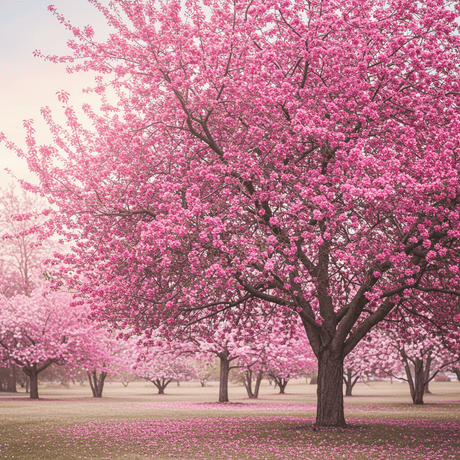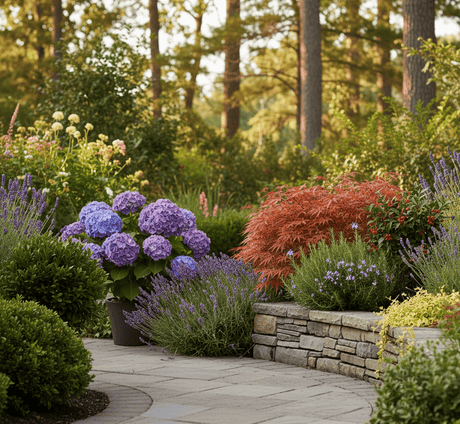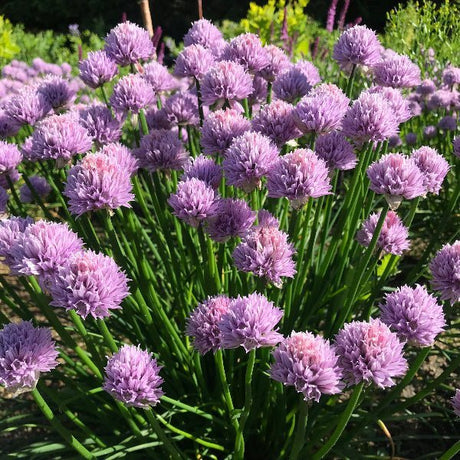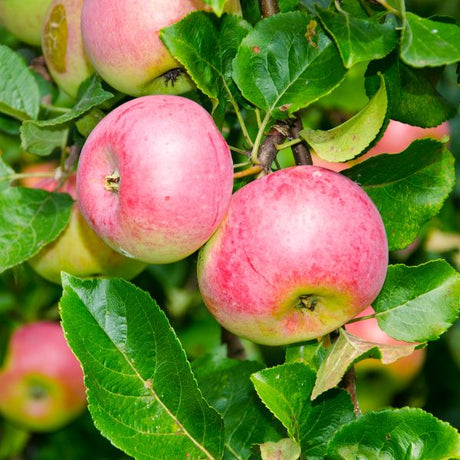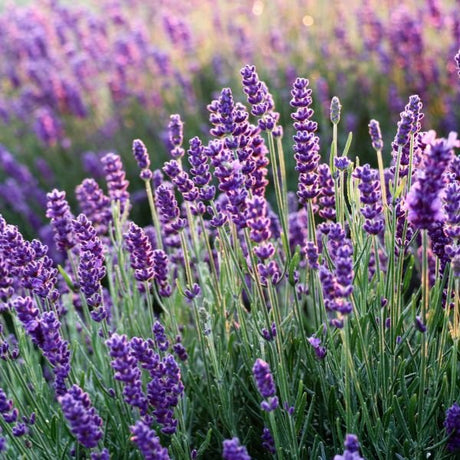Pink Pearl Apple Tree
Malus 'Pink Pearl'
- Stay Protected with Plant Sentry ™
Pink Pearl Apple Tree - #3 Container 4-5 Feet is backordered and will ship as soon as it is back in stock.
Plant Sentry™
Plant Sentry™

Plant Sentry™ Protected
Your order is protected by our compliance system that:
- Prevents restricted plants from shipping to your state
- Ensures plants meet your state's agricultural requirements
- Protects gardens from invasive pests and diseases
Delivery and Shipping
Delivery and Shipping
Delivery and Shipping
Fast, Safe Plant Delivery
Ships in 3-4 business days • Tracking provided • Weather protected
| Under $50 | $9.99 |
| $50 - $99.99 | $14.99 |
| $100 - $149.99 | $16.99 |
| $150+ | $24.99 |
✓ Zone-specific timing • ✓ Professional packaging • ✓ Health guarantee
Understanding Plant Options
Nature Hills offers plants in two main formats:
- Container Plants: Grown in pots with soil, sized by container volume and plant age
- Bare Root Plants: Dormant plants without soil, sized by height measurements
Container Plant Sizes
Container sizes indicate plant age and growing capacity rather than liquid volume equivalents. Our containers follow industry-standard nursery "trade gallon" specifications, which differ from standard liquid gallon measurements.
Young Plants (6 months to 18 months old)
| Container Size | Actual Volume | Metric Equivalent |
|---|---|---|
| 2" x 2" x 3" | 0.18 - 0.21 dry quarts | 0.20 - 0.23 dry liters |
| 4" Container | 0.31 - 0.87 dry quarts | 0.35 - 0.96 dry liters |
| 4.5" Container | 0.65 dry quarts | 0.72 dry liters |
| 6" Container | 1.4 dry quarts | 1.59 dry liters |
| 1 Quart | 1 dry quart | 1.1 dry liters |
| 5.5" Container | 1.89 dry quarts | 2.08 dry liters |
Established Plants (18 months to 2.5 years old)
| Container Size | Actual Volume | Metric Equivalent |
|---|---|---|
| 2 Quart | 2 dry quarts | 2.2 dry liters |
| #1 Container | 2.26 - 3.73 dry quarts | 2.49 - 4.11 dry liters |
| 5" x 5" x 12" | 3.5 - 4.3 dry quarts | 3.85 - 4.74 dry liters |
Mature Plants (2-4 years old)
| Container Size | Actual Volume | Metric Equivalent |
|---|---|---|
| #2 Container | 1.19 - 1.76 dry gallons | 5.24 - 7.75 dry liters |
| #3 Container | 2.15 - 2.76 dry gallons | 8.14 - 12.16 dry liters |
Large Plants (3-5 years old)
| Container Size | Actual Volume | Metric Equivalent |
|---|---|---|
| #5 Container | 2.92 - 4.62 dry gallons | 12.86 - 20.35 dry liters |
| #6 Container | 5.25 - 6.01 dry gallons | 23.12 - 26.42 dry liters |
| #7 Container | 5.98 - 6.53 dry gallons | 26.34 - 28.76 dry liters |
Bare Root Plants
Bare root plants are sold by height from the root system to the top of the plant. Plants may exceed minimum height requirements.
Common Sizes:
- Trees: 1 foot, 2 feet, 3 feet, 4 feet, 5 feet, 6 feet
- Shrubs & Perennials: 1 foot, 18 inches, 2 feet
Important Notes
Container Volume Specifications
- Trade Gallon Standard: Our containers follow industry-standard "trade gallon" specifications established by the American National Standards Institute (ANSI Z60.1) for nursery stock
- Volume Variations: Actual soil volume may vary due to plant root systems and growing medium settlement
- Age Indicators: Container size primarily indicates plant age and maturity rather than liquid volume equivalents
Growing Conditions
- Plant size can vary based on variety and growing conditions
- Container size helps indicate plant maturity and establishment level
- Larger containers generally mean more established root systems and faster landscape establishment
Seasonal Availability
- Bare root plants are available seasonally when dormant
- Container plants are available throughout the growing season
- Specific varieties may have limited availability in certain sizes
Questions?
For questions about specific plant sizes or availability, please contact our plant experts who can help you choose the right size for your landscape needs.
Plant Highlights
Pink Pearl Apple Tree highlights at a glance!
-
Plant Class
-
Botanical Name
-
Brand
-
Growing Zones4, 5, 6, 7, 8
-
Growth RateModerate
-
Mature Height
-
Mature Width
-
Leaf Color
-
Flower Color
-
Fall Color
-
Pollinator FriendlyYes
-
Pollinator Required
-
Bloom PeriodLate Spring
-
FragrantYes
Characteristics
Where To Plant
When To Prune
- Late Winter
Water & Moisture Needs
- Moderate
Sunlight Needs
Soil Needs
- Widely Adaptable
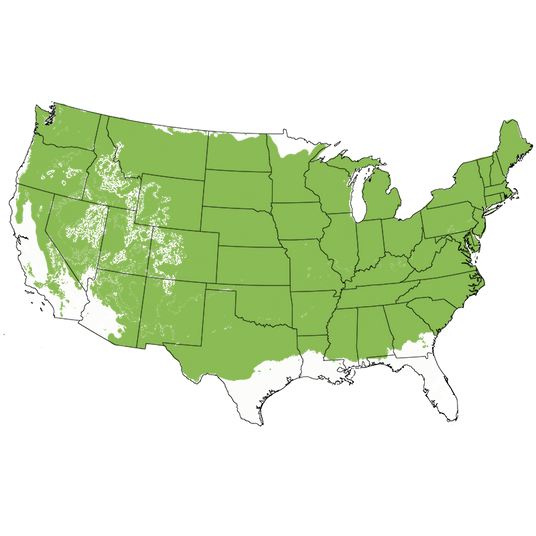
Growing Zones
Rosy Pink Fleshed Jewels - Pink Pearl Apple Tree!
- Creamy Pink Sweet-Tart Flesh!
- Soft Yellow-Green Skin & Pink Blush!
- Adaptable Heirloom!
- Fragrant Pink Spring Blooms
- Full Sun!
- Pollinators Love the Flowers
- Early Fall Ripening
- Very Cold Hardy
- ~600 Chill Hours
- Holds its Color When Cooked
- Baking, Preserves, Juicing, Sauce, Fresh & Stores Short Term!
- Early Blooming
- Needs Jonathan, McIntosh, Yellow Transparent, Dolgo or Zestar Pollinators
Just imagine, pink applesauce? Pink apple pie? Pink apple juice? The rosy goodness and ornamental beauty of the Pink Pearl Apple Tree (Malus 'Pink Pearl') is an heirloom variety Apple that will have your baked goods blushing!
Well-known and one of the first Pink Apples on the market, this is generally a medium-sized fruit tree with a strong conical shape. A pink-fleshed apple introduced in 1944 by Albert Etter, a California plant breeder, these heirlooms have been enchanting home growers ever since!
This is an early blooming apple, the bright pink blossoms attract many hungry pollinators looking for a spring feast! Fragrant and a colorful burst of spring glory, these are as ornamental as they are beneficial fruit trees!
The translucent, soft greenish-yellow skin has a rosy, youthful pink blush! The flesh is also a soft rosy pink when cut with creamy white highlights! Tart to sweet-tart depending on when you've harvested it, the color holds even after baked or cooked!
Pink Pearl apples ripen in late August to mid-September. It is a wonderful table Apple and makes beautiful pink applesauce!
Also great for fresh eating, baking into pies, chutney and preserves, desserts, sauce and stores fairly well! Juice for ciders and out of this world, healthy snacking!
How to Use Pink Pearl Apple Tree In The Landscape
Highly ornamental and beautiful landscape trees, Apple blossoms have entire festivals devoted to their beauty!
Sized and suitable for front yard gardening and edible landscaping that doesn't need to be hidden out of sight, these burst onto the spring scene in a brilliant pink explosion of color!
The summer foliage is just as handsome with a touch of fall color, these lovely heirloom trees fit into most sized gardens and with some summer pruning, can be trained smaller yet!
Fantastic orchard trees that pollinate among other early blooming apple varieties, this is a colorful, fragrant and hardy tree for the home garden, orchard or dual-purpose landscaping!
Pick your apples a bit earlier for tart baking apples, or later for sweet fresh-eating!
#ProPlantTips For Care
Resistant to Apple Scab, these cold-hardy fruit trees are tolerant of growing zones 4-9 heat and around 600 chill hours.
Full sun is the way to go for almost all fruit trees and Pink Pearl is no different. For the best growth, the most blooms and the largest fruit set, 8 hours or more of full sun per day is necessary.
Not particular on soil type, any organically enriched soil that has excellent drainage will provide a bounty of healthy fruit and a vigorous tree. These are widely adaptable trees!
Keep well watered to protect your investment and have the juiciest crops! Don't let dry out while establishing nor let endure drought without supplemental watering. Moderate, yet consistent soil moisture is key for the best yield!
A generous layer of mulch helps retain soil moisture as well as insulate the root system from heat and chill.
Prune in summer or late winter before growth, these are easily trained smaller or as Espalier if you desire!
For fantastically colored fruit and baked goods, you'll love the Pink Pearl Apple Tree as much as we do! Order yours from Nature Hills while they last!
Pink Pearl Apple Tree Frequently Asked Questions
When to Plant Pink Pearl Apple Trees
Planting Bareroot trees as soon as you can dig a hole in spring and until hot weather, the earlier the better. Plant container Apple trees throughout the growing season with complete success - that is the benefit of container plants - to extend the planting season. Your County Agricultural Extension Office is a great resource for first and last frost dates in your area.
How to Plant Pink Pearl Apple Trees
Dig a large hole only as deep as needed to accommodate the bareroot or container root ball, and twice as wide. Add Nature Hills Root Booster to speed root establishment. Remove the pot or bag and situate it into the hole so the top of the soil (soil line if bareroot), is level with the new location's soil being careful not to plant too deep. Water in again very well and backfill with the same soil you dug up, tamping down gently to ensure there are no air pockets.
Top off with a 3-4 inch thick layer of Arborist mulch. Consider staking your tree to keep its trunk growing straight for the first year to ensure it stands tall against strong winds and drifting snow.
When to Prune Pink Pearl Apple Trees
Trim off any broken branches from delivery as soon as you take them out of the box. Prune and trim apple trees while dormant, in late winter or early spring, before you see new growth.
How to Prune Pink Pearl Apple Trees
Dormant prune to:
- Remove any double leaders or narrow crotch angles
- Eliminate any crossing branches
- Thin interior branching and leave the fruiting spurs and strong branches in place opening up the canopy
- Branching at least 24-36 inches above the ground
Prune Apple trees in the summer to:
- Control size and shape by reducing the length of longer new growth on vigorous trees
- Remove water sprouts on the main trunk or older branches in the crown
- Remove suckers at the base of the trunk
- Thin fruit during heavy years on established trees
How to Care for Pink Pearl Apple Trees
Growing an apple tree is easy when proper soil, good drainage, attention to moisture, and regular fertility are maintained. Once you've chosen an apple tree that works for your climate, in the size you need for your landscape, and its pollinator (if needed), then you've accomplished half the battle!
- Apple trees do best in full sun and well-drained soil
- Water your apple trees when it gets dry - especially during the fruit production stage, and drought periods to keep it stress-free
- Use arborists' wood chips to mulch over the roots of your apples and have your soil tested to see what your soil may be lacking before adding fertilizers
- Maintenance pruning and shaping
Apple trees will tolerate a wide range of soils, so long as water and nutrients are not limited and the pH level is adequate.
How to Fertilize Pink Pearl Apple Trees
For the first year, water alone is most important. It is always best to get a soil test to see what your soil is lacking before adding more fertilizers. Once established, a fertilizer routine may be beneficial. We do offer some excellent slow-release organic options, applied according to the package directions.
Fruit trees need more phosphate and it's possible to apply too much nitrogen which affects the soil's pH. Test soil acidity or alkalinity using a pH Tester.
Fertilize in spring when you first see new growth emerging.
- Don't overdo it
- Phosphates are your friends
- Pay attention to pH in areas with extremely high or low soil pH
- Follow the directions
Pink Pearl Apple Tree Pollinating Info
Pink Pearl is not self-fruiting and needs a pollinating partner. Pair with one of these varieties:
- Red Jonathan Apple Tree
- McIntosh Apple Tree
- Yellow Transparent Apple Trees
- Dolgo Crabapple Tree
- Zestar!® Apple Tree
Harvest Times for Pink Pearl Apple Trees
Pink Pearl’s are typically ready to harvest in September.
Early-Season? Mid-Season? Late-Season? The terminology can be confusing for new apple tree growers. Weather, climate and your tree determine when it's ripe.
For Apples:
- Early-season is usually June-July
- Mid-season can be August-September
- Late-season can be from late September-November
The growing season consists of spring, summer, and fall, and varies with climate and weather. Areas with longer growing seasons in the warmer hardiness zones can greatly affect the harvest times for each particular apple variety grown in your area. Learn which growing zone you are in.
What Shipping Options Do You Offer?
NatureHills.com works closely with our growers and nursery professionals to ensure we ship when it is most appropriate for your area. Our goal is to deliver the hardiest plants by avoiding extreme high and low temperatures. Check out our shipping schedule for more information and to learn our wills and won'ts when it comes to shipping plants. Find your Pink Pearl Apple Tree for sale here at NatureHills.com!





